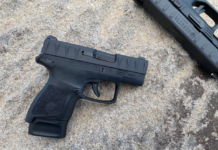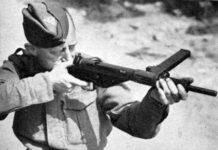Black Hawk Down was a film released January 8, 2002 and directed by Ridley Scott. Based on the book by Mark Bowden, it details the events of 1993 in Somalia after the U.S. withdrew Marine ground forces and started hunting down a warlord with a small group of U.S. Army Rangers and SOF Delta Operators.
During the titular events, Somalian irregulars managed to down two UH-60 Blackhawk helicopters that were providing transport and air support for the operation. The loss of the helicopters and the casualties involved in the crashes would lead to long rolling gunfight for the Rangers and Delta Operators in areas across Mogadishu with many times their own numbers of irregulars facing the US Forces. Despite the events being from 1993, the movie’s release after the terror attacks of 2001 helped compound the event as a precursory event to the Global War on Terror and the movie would be formative for many in that role. A later example of such a movie is 13 Hours, detailing the events of Benghazi in 2012 where another group of US personnel are besieged by angry hostile forces, but under different circumstances.
9-Hole Reviews, and Henry in particular whose rifle is showcased, holds MSgts Gary Gordon and Randy Shugart in high regard for their actions in attempting to secure the second crash site against overwhelming odds. Gary Gordon and his Colt Carbine and Randy Shugart with his M-14 hold off the Somalian irregulars without hope of support, in a scene immortalized in the movie. The two would receive the Congressional Medal of Honor for their actions and Chief Mike Durant, whom they went in to save, would survive, although he was captured after the Delta Snipers’ deaths.
The carbine used by Delta Operators of the day was an evolution of earlier short Colt rifles looking to increase reliability and provide a suppressor capability in a handier more compact package than the M16A2. They also used M4 prototypes before the official adoption the next year.
While the M16A2 wasn’t all that different from the A1, other than an easier to adjust sighting system set up for longer range, courtesy of the USMC, the Colt Carbines were very forward thinking. The Delta Operators attached lights and red dot optics, things we consider standard today, to the 12.5″ and 14.5″ guns they used. It was a lightweight capable carbine that didn’t suffer too greatly from velocity loss compared to shorter guns of previous iterations and future rifles like the Mk18. Rifles that didn’t have the dots but were running A2 uppers would run their rear sight towers all the way up for CQB shooting and other tricks of the era.
The Rangers were using M16A2s and the movie actually does an admirable job illustrating how the svelte Colt Carbines of Delta move well through the tight confines of Mogadishu while the longer M16 struggles somewhat in the hands of the Rangers as they dismount vehicles and move through buildings. It doesn’t fail them but M16A2’s with its long fixed stocks are just a long rifles, and that makes moving a challenge it tights spaces.
You can see a lot of what would become the M4 in the Colt Carbine, although provisions for things like the M203 weren’t integral. Much of what was learned during that fight would shape future weapons development for the infantry forces of the United States, its allies, and anyone else paying attention.
4 years after these events the M16A4 would be adopted. The very year after the events the M4 entered service, 1994, and would receive continuous upgrades to keep it in line the the M16A4. Quad rails, optics, lights, IR and visible laser aiming systems would all make their presence felt and evolve into their state today. The rifles of today are more reliable, their electronics smaller, lighter, and more dependable, and the advancements in optics durable and capable can trace all their origins back to Mogadishu and lessons learned there. LPVOs even started here as Schmidt and Bender would make their 1-4 Short Dot for Delta after the lessons learned on this mission. Two and a half decades later LPVOs are mainstream, much improved, and making their way to the infantry.
Funny enough S&B just made the thing for Delta and never tried to market it commercially, it never even crossed their mind really. Though the 90’s didn’t have the instant communication of the internet so telling America that Delta was using these awesome scopes from Europe would’ve been a slow ponderous push for sales.



